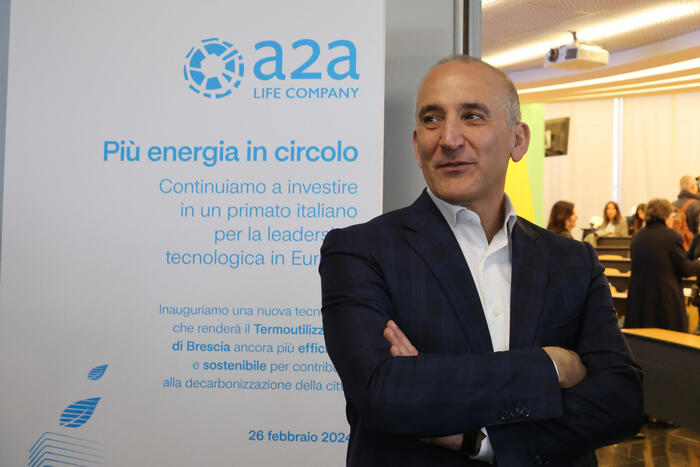The energy generation capacity from renewable sources, according to the International Energy Agency (IEA, for its acronym in English), will grow by 50% in five years, especially due to the installation of photovoltaic solar panels, which will absorb 60% of this increase compared to the 25% that will come from wind systems.
This increase, with undeniable benefits due to the reduction of emissions, nevertheless leaves a mark that is beginning to worry: the manufacture, transport and minimal recycling of solar panels leaves behind a polluting footprint.
Only the equipment that will reach the end of its useful life in nine years will represent eight million tons of waste.
This figure will multiply by 10 by the middle of the century and will represent more than 10% of the total global electronic waste, according to a study published in
Nature energy
.
Alejandro del Amo, CEO of Abora-Solar, a company backed by the European Innovation Council, highlights the saving of kilograms of CO₂ that the generation of photovoltaic energy supposes compared to the pollution generated by non-renewable sources and the progress achieved in 15 years: "In 2006 it took a decade to offset emissions, but that period has been reduced to just two years."
The generation of electricity through photovoltaic solar energy requires large surfaces for the facilities and requires valuable materials, expensive to produce and toxic
But reaching those benefits leaves a trail of indirect contamination.
The generation of electricity through photovoltaic solar energy requires large surfaces for the facilities and requires valuable materials (such as silver), expensive to produce (silicon) and toxic (cadmium and lead, among others).
To the pollution generated by the extraction and production of the components must be added that generated in transport.
According to a study by Argonne National Laboratori, the carbon footprint generated by panels produced in China, the main exporter of these systems, is double that produced by European manufacturers.
Del Amo says the goal is to minimize both direct and indirect pollution.
To avoid the first, the strategies point in several directions: increase the efficiency of the panels (the oldest ones take advantage of only 20% of the solar energy that arrives while the most advanced aspire to reach 80%), increase the uses (electricity , domestic hot water, heating and air conditioning) and extend the useful life of the facilities (from 20 to 40 years), which would allow not only a greater compensation of gases generated compared to generation with non-renewable resources, but also delay the residuous generation.
Progress is being made towards the panel of the future, made with 100% recyclable materials
Alejandro del Amo, CEO of Ebora-Solar
Indirect contamination is more difficult, although Del Amo affirms that "progress is being made towards the panel of the future, made with 100% recyclable materials."
But for now, it is more of a goal than a reality, despite the benefits it would bring.
According to the study published in
Nature:
"Incorporating recoverable materials would generate savings of 12,617 million euros and would allow them to be used to produce 2,000 million new modules with the capacity to generate 630 GW".
Few countries (USA, Germany, France or Japan) incorporate recycling policies in solar panels.
Europe has managed to recover 4,500 tonnes of cadmium tellurium from photovoltaic panels in one year.
But these actions are not enough, according to the same research: "These practices fail to recover components such as silver, copper, silicon and lead, which constitute most of the potential value of a module and the greatest environmental impact."
In addition, the reuse of these elements also involves an energy and economic cost.
In this sense, the director of Abora-Solar admits: “The economic is still the key.
Send the euro, profitability ”.
To meet the growing demand, low-cost and more efficient alternatives to silicon-based solar cells (the most widely used today) are needed.
New materials are emerging, such as lead halide perovskites, but they are unstable and contain lead, one of the most polluting elements.
A team of engineers from the University of Washington proposes in a research published in
Chemistry of Materials
a more stable and less toxic semiconductor such as perovskite oxide.
Adding household batteries is not economically profitable under current conditions, according to a study, and the most common, based on lithium-ion, are still far from the desired levels of cost, safety and environmental impact
To the footprint left by the extraction, manufacturing and transport processes of all the elements involved in photovoltaic panels, one more must be added: the maximum savings in the electricity bill for consumers is generated if energy production is combined with batteries, which would reduce household spending by up to 70%, according to a study published in
Science Direct
.
But the same study admits that this option "is not economically profitable under current conditions" and the most common batteries, based on lithium-ion, are still far from the desired levels of cost, safety and environmental impact.
In this sense, the Basque research center CIC energiGUNE is studying new materials and processes for the development of sodium-ion (Na-ion) batteries, whose technology is emerging as a more sustainable and safer alternative.
You can follow MATERIA on
,
and
, or sign up here to receive
our weekly newsletter
.

/cloudfront-eu-central-1.images.arcpublishing.com/prisa/UXQIWOQ7LAE33MH6WH2TKMZR24.jpg)







